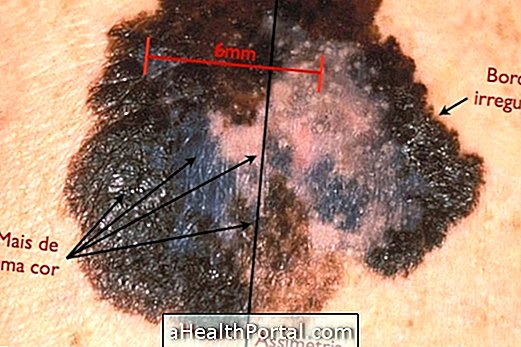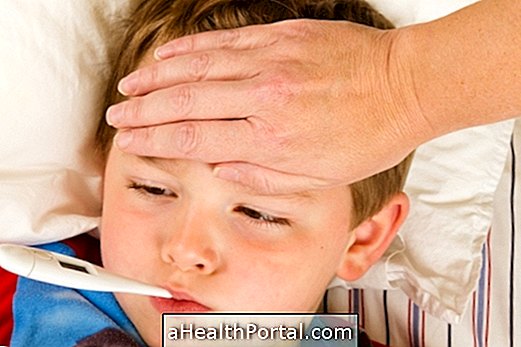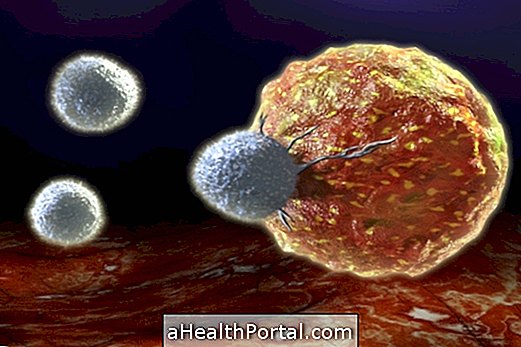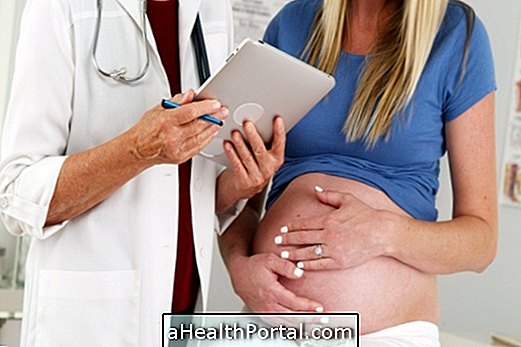Endometriosis is a very painful syndrome in which the tissue lining the uterus, known as the endometrium, grows in other parts of the abdomen, such as the ovary, bladder, or intestine, for example, causing symptoms such as severe pelvic pain, very heavy menstruation, and even infertility .
If you think you may have endometriosis, select your symptoms:
- 1. Severe pain in the pelvic region and worsening during menstruation Yes No
- 2. Heavy Menstruation Yes No
- 3. Cramps during intercourse Yes No
- 4. Pain when urinating or defecating Yes No
- 5. Diarrhea or constipation Yes No
- 6. Fatigue and Excessive Tiredness Yes No
- 7. Difficulty getting pregnant Yes No
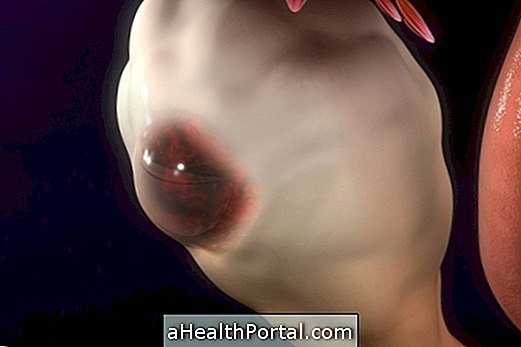
The intensity and frequency of these symptoms can vary from month to month and from one woman to the next, so the diagnosis can be quite difficult. However, if it is suspected to have endometriosis it is very important to consult a gynecologist to start treatment and to evaluate if there is a decrease in symptoms.
Also, depending on the site that is affected by the growth of uterine tissue, there are different types of endometriosis with symptoms that vary:
1. Intestinal Endometriosis
This type of endometriosis happens when the tissue of the uterus develops inside the intestine and in these cases, some more specific symptoms include:
- Constipation with very strong cramps;
- Blood in stool;
- Pain that worsens when stool;
- Feeling of very swollen belly;
- Persistent pain in the rectum.
Often, the woman may start by suspecting some disease in the gut, such as irritable bowel, Crohn's syndrome or colitis, however, after further evaluation by a gastroenterologist one may begin to distrust endometriosis, it may be necessary to consult a gynecologist.
Check out all the symptoms that may indicate intestinal endometriosis and what the treatment options are.

2. Endometriosis in the ovaries
Ovarian endometriosis, also known as endometrioma, is characterized by the growth of the endometrium around the ovary, and in these cases the symptoms are almost always the most generalized, such as intense pain in the pelvic region, excessive menstrual bleeding and pain during intercourse.
Therefore, diagnosis with a gynecologist is very important to identify where the tissue is growing and if the ovaries are affected. For this, the doctor usually does a videolaparoscopy with general anesthesia, where it inserts a thin tube with a camera in the tip through a cut in the skin and observes the organs inside the abdominal cavity. Understand better how this technique works and how the treatment of endometriosis in the ovaries is done.
3. Endometriosis in the bladder
In the case of endometriosis arising in the bladder, the most specific symptoms that may arise are:
- Pelvic pain that worsens on urination;
- Presence of pus or blood in the urine;
- Severe pain during intimate contact;
- Frequent urge to urinate and full bladder sensation.
Some women may only present one or two of these more specific symptoms and therefore, in some cases, bladder endometriosis may take time to be correctly identified, since the first diagnosis is usually of urinary tract infection. However, the symptoms do not seem to improve with the use of antibiotics.
See other possible symptoms of this type of endometriosis and how the treatment is done.
How to confirm the diagnosis
Normally the gynecologist may be suspicious of endometriosis only with the evaluation of the symptoms described by the woman. However, it is necessary to perform a pelvic ultrasound to confirm the diagnosis and discard other options such as ovarian cysts, for example.
In addition, the doctor may also order a tissue biopsy that is usually done with a minor surgery in which a small tube with a camera at the tip is inserted by a cut into the skin, allowing the pelvic region to be seen inside and tissue samples taken which will be analyzed in the laboratory.

